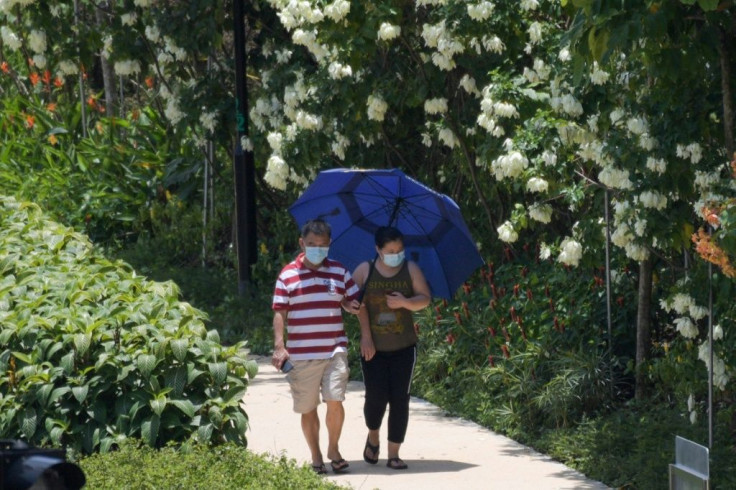Tough Combined Measures Key In Virus Fight: Study
Quarantining infected people, workplace distancing and school closures are most effective in combatting the spread of the new coronavirus when implemented together, according to new research released Tuesday looking at Singapore's response to the killer disease.
Researchers from the National University of Singapore saw a dramatic drop in projected cases when all three physical distancing measures were done at once.
But they warned that if a large number of infected people in the community had no symptoms, or if infection rates were very high, the policies had a much reduced effect.
Singapore has used a policy of testing and tracing of COVID-19 patients to limit the spread of the virus, without ordering a widespread lockdown of society and the economy.

But the city-state on Tuesday announced new measures to shut down bars and other entertainment venues and cancel religious services and after school activities, a day after reporting 54 new infections, bringing the total number of cases to 509.
The study, published in Lancet Infectious Diseases, is the first modelling study of its kind in Singapore.
Researchers modelled the spread in four scenarios -- when authorities quarantined people infected with COVID-19 and their families; quarantine plus immediate school closures; quarantine plus half of the workforce at home for 2 weeks; and a combination of all three.

In their baseline scenario -- which assumed authorities did nothing and each patient infected 1.5 other people -- 80 days after the first 100 cases were detected the average cumulative cases would have reached 279,000, or 7.4 percent of the population.
Compared to this, researchers found that the combined policy of quarantine, workplace distancing and school closures was the most effective, reducing the estimated average number of infections by 99.3 percent to an estimated 1,800 cases.
"While less effective than the combined approach, quarantine plus workplace measures presented the next best option for reducing SARS-CoV-2 cases, followed by quarantine plus school closure, and then quarantine only," the report said.
But it found that higher infection (R0) values made all responses more challenging, with an R0 value of 2.5 resulting in 1.2 million cases, 32 percent of the population, in the baseline scenario.
This was reduced 78.2 percent with the combined measures, leading to 258,000 cases.
The response was further complicated when the researchers allowed for an increase in asymptomatic people with the virus.
If they assumed that half of people could pass the virus on without having symptoms -- compared to an estimate of 7.5 percent in the baseline model -- infections soared.
Even at a low R0 of 1.5 and with all the combined measures in place, virus cases at day 80 were estimated at 277,000, compared to the original 1,800 figure.
© Copyright AFP 2024. All rights reserved.





















